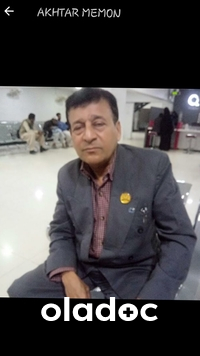Table of Contents
Understanding The Eye Infection In Pakistan
Rated as one of the most common ocular conditions by the Centers for Disease Control and Prevention, Pinkeye, or Conjunctivitis refers to an inflammation and dilation of tiny blood vessels in the conjunctiva; a transparent membrane lining the inner eyelid and eyeball whites, making them more visible and giving the eye its characteristic reddish or pink tint.
Kids are more prone to contracting conjunctivitis. It is not very serious, but spreads fairly quickly in schools because it is contagious and children are not mindful of it. However, it usually doesn’t hurt your sight. Prompt check up and pinkeye treatment is the way to prevent incurring any permanent issue.
Eye Infection In Karachi – Surge In Pink Eye Cases
The pink eye virus in Pakistan has hit Karachi and other cities such as Lahore. Experts have warned the Pakistani people to exercise extreme caution as the virus is spreading uncontrollably. Recommended precautions include practicing good hygiene, and avoiding close contact with affected individuals, and contaminated surfaces. If you are affected by the eye infection in Karachi, it is advised to wear black glasses, and separate all your personal items such as utensils and bedding from other people to reduce the risk of transmission of the virus. To buy eye drops for eye infection in Pakistan visit oladoc.
Pink Eye Infection In Lahore
Lahore, a densely populated city in Punjab, Pakistan has also seen a spike in Conjunctivitis cases. Almost 85 people have fallen victim to the outbreak in just the last 24 ours as confirmed by health officials. If you notice the symptoms of the pink eye infection in Lahore it is advised to visit your nearest hospital immediately and avoid rubbing your eyes.
Pink Eye Treatment And Types
1- Viral Conjunctivitis
Affecting one or both eyes, this highly contagious form of pinkeye that commonly spreads via coughing or sneezing may be caused by the common cold, or the sore throat and upper respiratory infection-causing Adenovirus. Other infective agents include the Herpes, Rubella, and Rubeola (measles) virus.
Symptoms:
- Excess tearing
- Swollen eyelids
- Photo-sensitivity
- Itchiness or Burning
- Clear or slightly thick, whitish drainage
Treatment:
Prevention is of greater importance than treatment, as the infection self-clears within 2-3 weeks, with infected individuals being able to return to their school or work lives 3-7 days after onset. However, rare cases of herpes pinkeye can be treated using antiviral medication.
2- Bacterial Conjunctivitis
With hand-to-eye contact being the prevalent mode of transference, this contagious condition results from cat scratches and bites, Staph infections, Influenza, or Gonorrhea-causing bacterial invasions in or around the eye.
Symptoms:
- Mild pain
- Swollen and droopy upper eyelids
- Excess drainage of a sticky yellow, or greenish-yellow discharge from the eye’s corner, resulting in the eyes being ‘shut’ together, usually after waking up.
Treatment:
The use of prescription-grade antibiotic eye drops or ointments can reduce recovery time from the usual 7-10 to nearly 2-4 days, with infected individuals being able to resume their daily schedules 24 hours after starting treatment.
3- Allergic Conjunctivitis
Allergic reactions in response to common allergens like dust, smoke, pollen, or pet dander can also affect the eyes by forcing the immune system to trigger anti-inflammatory histamine release from the eyes as a protective measure, resulting in a red or pink tint.
Symptoms:
- Excess tears
- Photo-sensitivity
- Nasal blockage and watery discharge
- Intense burning, itchiness, and watery eyes
Treatment:
Pinkeye treatment for those who have been disposed to certain allergies include allergy eyedrops, antihistamines, and mast cell stabilizers, or decongestants, steroids, and anti-inflammatory eyedrops, respectively.
Warm and cool compresses can also be applied regularly for effective pain management against viral and bacterial conjunctivitis, or allergic conjunctivitis, respectively.
Other possible causes of pinkeye include dry eyes due to a lack of tears or exposure to the wind or sun, irritation due to certain chemicals, fumes, or smog, or a partially opened tear duct in infants.
Prevention
To prevent pink eye or Ashob e Chashm you should adhere to the following precautions:
- Avoid sharing personal items such as towels, coloured contact lenses and eye makeup.
- Refrain from touching or rubbing your eyes after coughing or sneezing.
- Wash your hands frequently with hand sanitizers, particularly in public places.
- Take preliminary measures against seasonal allergens.
- Wear goggles for antibacterial protection while swimming.
- Temporarily switch to eyeglasses from contact lenses to avoid complications in case of infection.
- To avoid re-infection, dispose of all old eye makeup and disposable contact lenses, or thoroughly disinfect your hard contact lenses overnight prior to using them post-infection.
- Antibiotic ointments should be applied in newborns to avoid possible eye infections from bacteria present in the birth canal.
Another thing to be mindful of is the contagion. Viral and bacterial conjunctivitis are contagious which means others can catch it from you if you’re infected.
Therefore, it is advised to take off from work or college until it goes away. If your child has it, keep him home until the symptoms lessen.
The pinkeye works like any other contagious medical problem. It can spread in places of co-working or co-existing like offices, schools, houses etc. Therefore, it is recommended that you clean your hands with soap or sanitizer before touching your face.
When Should You See A Doctor?
As discussed above, pinkeye onset can be a result of various eye conditions. One should seek pinkeye treatment if they experience pain in the eyes or blurring, or any other symptoms stated above, immediately.
If you wear contact lenses and have contracted conjunctivitis, you should remove them immediately as they can be causing some damage of their own.
While conjunctivitis is generally harmless, urgent medical attention may be required in case of excess mucus or pus production, fevers, body aches, or if symptoms do not improve within 12-24 after starting treatment, as it could be a sign of other mild to severe eye problems such as a corneal ulcer, styes, or blepharitis (eyelid inflammation), among others.
Pinkeye treatment is essential and shouldn’t be delayed. You can also book an appointment with a top Ophthalmologist in Karachi, Multan and Islamabad through oladoc.com, or call our helpline at 042-3890-0939 for assistance to find the RIGHT Doctor for your ocular issues.






